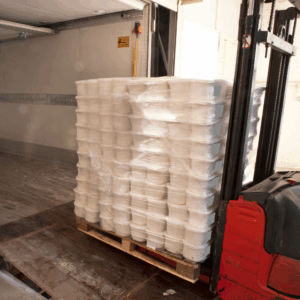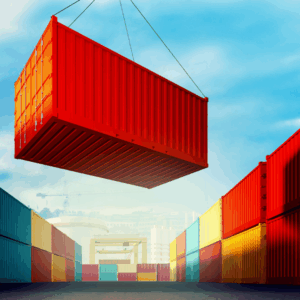
From the fundamentals of container shipping to advanced principles of strategic logistics service, we will dissect how to build an ocean freight strategy that balances cost, speed, and reliability—while constantly referencing your key concerns: less than container load shipping rates, less than container load rates, and ocean freight services.
Optimizing Shipping Container Logistics and Allocation
When managing shipping container logistics and allocation, the challenge lies in deciding who gets container space, when, and how to distribute it across routes. In practice, logistics planners must forecast demand, assess seasonal fluctuations, and categorize shipments into full loads (FCL) or LCL ocean freight based on cost-efficiency. A well-designed container allocation model utilizes metrics such as weight, volume, cargo type, and route profitability to assign container slots intelligently. Since LCL rates depend heavily on volume or weight, logistics teams aim to group smaller consignments, reducing idle space and maximizing container utilization. Furthermore, carriers and forwarders must determine how many containers to deploy on each leg of the network, taking into account repositioning costs and the return of empty containers. In some trade corridors, repositioning an empty container may cost nearly as much as a loaded trip, so allocation models often incorporate penalties for empty moves.
To support this, a strategic logistics service includes advanced forecasting tools, optimization algorithms, and real-time data on capacity, demand, and port congestion. The logistics service provider functions as a hub manager: allocating space to 
Designing a Container Shipping Network & Strategic Logistics Service
Constructing a robust network for container shipping requires integrating multiple layers: feeder services, mainline ocean legs, transshipment hubs, and inland connections. In designing container shipping networks, planners must select which ports to activate as hubs, where consolidation or deconsolidation occurs, and how to route containers between regional gateways. A well-designed network reduces transit times, avoids bottlenecks, and lowers handling costs. Integration with ocean freight services ensures that the routes support both FCL and LCL ocean shipping, enabling flexibility for clients with varying cargo volumes.
A strategic logistics service provider looks beyond simply moving containers; it orchestrates the network design so that less-than-container-load rates remain viable. For instance, a hub port might serve as the consolidation center for multiple feeder lines. Smaller shipments are aggregated there into containers bound for the next leg. That hub becomes the node where your less-than-container-load shipping rates are most attractive. The forwarder negotiates base rates with shipping lines, applies surcharges appropriately, and offers ocean freight shipping quotes that reflect actual cost, including handling, inland drayage, and customs. By designing the network in this way, clients can rely on transparent and competitive quotes, and the logistics provider can optimize space utilization across the entire network.
In this model, digital freight forwarding can provide instant shipping rates and online shipping quotes, enabling clients to compare live LCL cargo rates against ocean freight services in real-time. The forwarder’s platform integrates spot rates and contract rates, enabling seamless switching between less-than-container-load rates and full-container alternatives. Over time, clients learn which lanes are better suited for LCL ocean freight and which should default to FCL, leading to more mature allocation logic within the container shipping logistics framework.

At the heart of all this lies less than container load shipping rates—the price you pay to ship partial containers under ocean freight services. These rates reflect not just a pro rata share of a container’s cost but also incorporate surcharges, handling, port fees, and risk premiums for consolidation. In a well-run strategic logistics service, the forwarder will break down the less-than-container-load rates into base rate, fuel surcharge, currency adjustments, origin/destination handling, customs, and inland transport. Clients, in turn, gain clarity on which components drive costs and how route optimization or packaging changes can reduce them.
When evaluating less-than-container-load shipping rates, savvy shippers compare quotes across multiple providers, request “all-in” quotations, and thoroughly analyze the terms. The forwarder’s ability to aggregate demand and share capacity across clients means they can offer more favorable LCL rates than you might negotiate on your own. That’s why digital platforms providing ocean freight services and instant shipping rates are so powerful—they reveal real-time comparisons and transparency across providers. Over time, as your volumes grow or your network matures, the forwarder may propose adjustments in your container allocation, adjust routes, or recommend shifting some lanes to FCL to optimize overall cost per unit.
A mature logistics setup treats less-than-container-load shipping rates not as a constraint but as a flexible instrument. When volume spikes, it may convert to FCL. When demand dips or markets shift, LCL offers a buffer. The ocean freight services become the backbone of your global supply chain, with container shipping logistics and allocation fine-tuned to deliver maximum value.
Frequently Asked Questions
What is the difference between LCL ocean and FCL ocean freight?
LCL ocean means you share container space with other shippers, paying per volume or weight. FCL means you lease the full container exclusively. FCL often offers a lower cost per unit when your load is large; LCL excels for smaller shipments needing flexibility.
How are less-than-container-load (LCL) shipping rates calculated?
They’re calculated based on the higher volumetric or actual weight, plus base ocean freight, surcharges (including fuel, currency, and handling), and origin and destination costs. There’s typically a minimum charge per shipment.
What is a typical range for LCL cargo rates?
Rates vary by route and season, but they generally fall within moderate ranges per cubic meter when you include base ocean freight. Actual all-in costs depend on surcharges and handling fees.
How can I get an ocean freight shipping quote online?
You can use digital freight forwarding platforms where you enter origin, destination, weight, and dimensions to compare ocean freight services, instant shipping rates, and LCL ocean freight vs FCL options.
What ocean freight services should I consider?

Is air freight from Germany worth the extra cost?
For urgent, high-value, or perishable goods, the speed may justify the premium. For larger bulk shipments, ocean freight services (LCL or FCL) generally remain more cost-effective.
Can ExFreight provide combined air + ocean freight quotes?
Yes — ExFreight offers integrated solutions combining ocean freight services, LCL rates, and air options to propose the optimal mix for your route and cargo.
What documentation is required for LCL ocean shipments?
Required documents include a commercial invoice, a packing list, a bill of landing, a certificate of origin, and any export permits, depending on the cargo.
How long does LCL ocean freight take?
Transit time varies by origin and destination route; international LCL shipments often take multiple weeks, depending on consolidation, transshipment, and port handling.
Success in modern international trade depends not only on the product being transported, but also on how its movement is managed through complex logistics networks. Strategically integrating ocean freight services, particularly the intelligent use of less-than-container-load (LCL) services, represents a tangible competitive advantage. When companies fully understand how less-than-container-load shipping rates are built, how maritime transport networks are designed, and how to allocate containers efficiently, they can reduce costs, improve delivery times, and optimize the use of logistical resources.
Designing an efficient container shipping network, backed by a data-driven approach, not only maximizes capacity but also reduces the operational footprint of unnecessary empty container movements. At the same time, having a robust strategic logistics service facilitates informed, real-time decision-making by aligning operational capacities with market demands. Tools such as online quotes, instant rates, and complete shipment visibility allow businesses to remain agile, especially when markets shift rapidly.
Through this synergy of strategy, technology, and industry expertise, it becomes possible to overcome the inherent limitations of traditional ocean freight models and offer sustainable, efficient, and profitable solutions for both large shippers and smaller businesses, leveraging the benefits of LCL ocean freight consolidation.
Ultimately, understanding and correctly applying the principles of less-than-container-load rates, container shipping logistics, and ocean freight services not only helps reduce logistics costs but also positions your company to grow internationally with control, flexibility, and vision. In a world where logistics efficiency makes all the difference, integrating these concepts is not optional — it is a strategic necessity.
Are you ready to transform your international logistics? Contact ExFreight to access an optimized global network, competitive rates, and the support of an advanced digital platform that simplifies logistics complexity.





Leave A Comment
You must be logged in to post a comment.